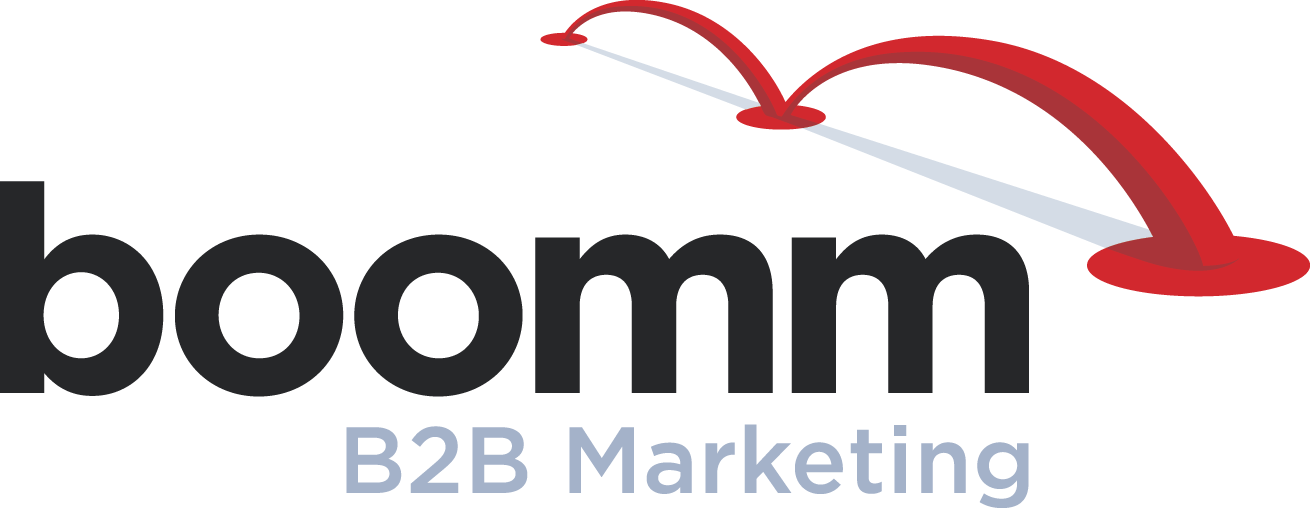Our back pages: 20 years of B2B marketing advancements

by Pat McAuley, President/Chief Strategy Officer
We all were so much younger in 1998. Busting “The Running Man” moves in our Zubaz, the future sure seemed bright. Turns out, we were right … and not only because Zubaz aren’t a thing anymore.*
Boomm B2B Marketing turns 20 this summer and we feel we’re better than ever. Today, our work benefits from an ever-expanding marketing toolbox filled with new and improved tools. Let’s take a quick look at a few of these B2B marketing advancements.
Design
That was then (1998): Most agency art directors and designers found themselves saddled with QuarkXPress desktop publishing systems, which dominated the market. Design software was about 10 years old and certainly a great leap forward from traditional, manual efforts for producing commercial art. But right around 1998, Quark’s near monopoly led to overpriced, stagnant software. A slew of better alternatives like Photoshop, Illustrator and InDesign (launched in 1999) soon would leave it in the dust.
This is now (2018): Your 1998 self would be unable to comprehend the firepower and speed of today’s desktop publishing software. Similar software for video editing and production has improved speed and quality.
Why now is better: Our creatives say the only downside of design software upgrades is that too many users tend to rely on the newest features and tricks, leading to over-used clichés. But better tools in the hands of great creative minds and craftsmen will always lead to the realization of the best ideas.
Public relations
That was then (1998): B2B PR specialists spent their days thumbing through a Bacon’s media directory, a literal phone book of editorial contact information. After picking out a prime trade-media target, you’d package up a multipage manuscript and set of photographs – either as glossy prints or color slides (!) – and FedEx them out. A few months later, that printed issue of Australian Coal Mining Journal, featuring your client’s case study, would find its way to your media director’s desk.
This is now (2018): Today, just like most of the media itself, editorial information is entirely digital, updated in real time. Likewise, electronic communications have cut the pitch/placement cycle in half. A quick email, with multimedia attachments, puts the pitch or submission in an editor’s inbox immediately.
Why now is better: Less windup and better pitches.
Social media
That was then (1998): A site called SixDegrees.com, launched in 1997, lays claim to being the first social site. But to spread some brand love socially, the post-trade show cocktail hour was still the best route.
This is now (2018): The willingness of professionals in every industry to join and participate in social media platforms, and the infinite data that flows from their profiles and online actions, presents amazing opportunities for brand exposure and interaction. Valuable content that helps customers and prospects do their jobs better – created, promoted and distributed based on data – builds trust, affinity and preference in a matter of weeks. In the old days, that required months or years of liver-destroying cocktail hours.
Why now is better: Better targeting, more-precise messaging. A brand’s resources are used more efficiently, and prospects see information specifically designed for their (work) world. Win, win.
Paid media
That was then (1998): Trade print media research, analysis, planning and buying hasn’t changed much since then, though PDF media kits, Excel spreadsheets and email negotiations have streamlined the process. But for B2B brands, trade print was it. Apparently, digital banners existed back then (here’s a fun, brief look at the first) but I guarantee you none were geared toward business buyers.
This is now (2018): Print remains important to B2B brands but a good media plan these days includes plenty of spend on the digital side of trade media platforms. This includes, yes, digital banners, as well as e-newsletter sponsorships, native advertising and content marketing. Programmatic targeting and account-based marketing, fueled by rich data, are the quickest ways to deliver pinpoint messaging and relevant content to the best prospects. And there’s now also a little something called Google, which is the freeway between buying intent and your brand as the perfect remedy for B2B customer pains.
Why now is better: Less waste, razor-sharp segmentation, customizable messaging, real-time metrics for optimal spend, data-rich analytics to drive conversions. Adds up to better business results.
Communications strategy
That was then (1998): Efficiency and effectiveness weren’t possible without a rock-solid plan to communicate differentiated brand value to the most profitable B2B buyers.
This is now (2018): Same as it ever was.
What were you doing in 1998? Do you agree that the world of marketing and communications has never been better?
* Hmm, seems Zubaz still are a thing. Buy some here!



